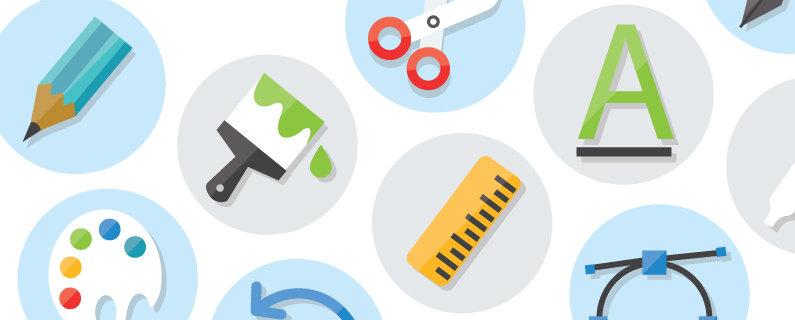
Every time I turn around it seems there’s another site or app making it easy for just about anyone to do their own design work. This isn’t strictly a graphic design thing of course. Sites like Pinterest are filled with tutorials on how to DIY everything from simple crafts to major home improvements and renovations. The question: Is this a good thing?
Unfortunately the answer isn’t black or white. A lot of designers feel frustrated by these quick fix design tools. It could be argued the work of a designer or an artist is devalued every time someone uses a shortcut design app. If you’re an Instagram user, you may remember the slew of articles a few years ago wondering whether Instagram would negatively impact professional photographers. If everyone was suddenly a photographer, it would be hard to justify using the services of a professional, right?
Wrong.
As far as I know, based on conversations with photographer friends, Instagram hasn’t rendered them useless. In fact, most of them use the app themselves, both to promote their traditional photography, and for entertainment. Generally, people still see the value in hiring professionals versus their cousin who happens to be really great at adding filters in VSCO Cam.
The same seems to be true of DIY design apps. Sure you can create your own advertisement, having never opened an Adobe program in your life, but don’t be surprised if you get what you pay for. There’s really no replacement for the kind of attention to detail and thoughtful decision making a good graphic designer will exhibit. Most of us have spent years practicing and learning about design, and those refined skills hopefully come through in our work. Sure, our parents may not understand why they needed to pay for an entire college semester of Color Theory 101, or why our professors had us spend two weeks kerning our own names on the letterpress, but those exercises ended up making a world of difference.
Falling for the taglines and reviews of programs like Canva, would be a mistake. You won’t be an expert after signing up, and you won’t be creating award-winning work. While it’s nice that there’s a quick option for a non-designer to create something, you won’t magically be a design master when the app finishes downloading.

As far as the “is this a good or a bad thing?” question: it depends on the motivation behind it. While I think it could be harmful, it usually isn’t. Sure, if a person suddenly believes they’re the next Paula Scher or Saul Bass after making a simple poster using their smartphone, that’s unfortunate. But it’s unlikely they will be taking business from the professionals. The type of person who respects good design and would make an ideal client would see their own shortcomings and most likely forgo the chance to be their own designer.
Like Instagram, I think these quick tools can be fun and serve a real purpose. Someone could easily start using one of these programs and be inspired enough to want to learn more. Anything that causes a person to realize they have a previously undiscovered desire to learn more about design, is ok in my book. When and if a person tries Canva or a similar site and realizes the templates leave them wanting more, they will hopefully start exploring design, learning the history and maybe even signing up for classes. Or there’s of course the option to you know, call the professionals for help.
Check out our webinar on creating a Visual Content Strategy.

